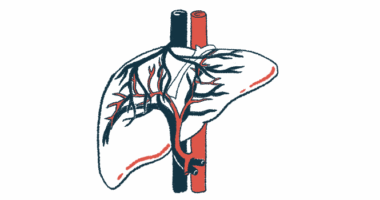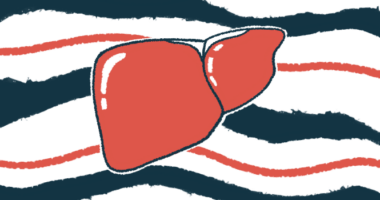Patient identification guidelines may help diagnose biliary atresia earlier
Experts hope new guidance helps ID liver disease in babies in first month

A team of experts in the U.S. and Canada have developed patient identification guidelines to help pediatric primary care providers, or PCPs, in making an earlier diagnosis of biliary atresia, a liver disease found in infants — hopefully within a baby’s first month of life.
Biliary atresia is an infantile liver condition in which the bile ducts, a series of tubes that carry the digestive fluid bile out of the liver and to the intestines, are blocked or missing. As a result, bile cannot flow properly, building up to toxic levels in the liver, which can set the stage for serious liver complications.
In the U.S., according to the researchers, treatment for biliary atresia in infants typically is not given until more than 60 days after birth. This is due in large part to a delay in diagnosing the condition in babies. These guidelines aim to help doctors to identify these patients within the first two to four weeks of life.
“By identifying infants earlier, PCPs have a unique opportunity to improve outcomes and help reduce the tremendous liver transplant burden of BA [biliary atresia],” the experts wrote.
The recommendations, “Guidance for the Primary Care Provider in Identifying Infants With Biliary Atresia by 2-4 Weeks of Life: Clinical Report,” were published in Pediatrics, a journal of the American Academy of Pediatrics.
Treatment for biliary atresia recommended within 30-45 days after birth
Bile accumulation and liver damage due to biliary atresia also causes bile to leak into the bloodstream. This leads to symptoms that include pale stools, dark urine, and yellowing of the skin and whites of the eyes, called jaundice.
The mainstay treatment for biliary atresia is the Kasai procedure — a surgery that basically works to make a new channel for bile to flow out of the liver to the intestines. Ideally, the procedure should be performed within the first 30 to 45 days after birth to result in the best possible outcomes, including minimizing the need for a liver transplant later on.
However, in the U.S., this is rarely the case — on average, babies with biliary atresia don’t get the surgery until two months or more after birth. This is largely because biliary atresia isn’t recognized early enough, with delays in biliary atresia diagnosis preventing a timely start of appropriate treatment.
The newly published patient identification guidelines were developed to help primary care doctors better identify biliary atresia so that treatment can be given sooner where needed.
The recommended strategy comprises three sequential steps to identify biliary atresia. The first two steps involve looking for two of the hallmark early symptoms of the disease: jaundice and pale stools.
Jaundice is due to the abnormal buildup of bilirubin, a yellow-reddish waste product that’s normally excreted by the liver through bile, in the bloodstream. This causes bilirubin to accumulate in the skin and whites of the eyes, making them look yellowish.
Experts hope for widespread use of new patient identification guidelines
While jaundice can occur in healthy newborn babies, any occurrence that lasts after the first two weeks of life can be a sign of biliary atresia and should trigger further testing.
Bilirubin metabolization in the intestines turns it into a brownish color that contributes to the characteristic color of stool. In biliary atresia, lack of bilirubin in the intestines causes stools to appear pale, grey, or white.
Pediatric doctors should evaluate babies for the presence of pale stools, whether directly or based on parents’ or caregivers’ reports, according to the experts.
The third step in detecting biliary atresia is to directly measure levels of bilirubin in the blood. In many U.S. hospitals, blood bilirubin levels are checked shortly after birth. If these levels are within normal ranges, then it’s unlikely that the baby has BA, and further testing is only needed if the baby shows symptoms like jaundice or pale stools.
If bilirubin levels at birth are elevated, they should be checked again after 2 weeks of age, and if levels are still high (1 mg/dL or higher), the infant should be immediately referred to a gastroenterology specialist for further testing to check for biliary atresia. Bilirubin levels also should be measured at 2 to 4 weeks of age if levels weren’t measured at birth.
[Pediatric primary care providers] can identify infants who may have BA [biliary atresia] at 2 to 4 weeks of life, using a strategy … [that] involves measuring a … bilirubin level based on an infant’s eye color, stool color, and prior laboratory results. … [The use of such a strategy has] been associated with earlier ages of treatment.
Importantly, the guidelines also note that, in some cases, young babies with biliary atresia may not have jaundice, may have normal-colored stools, or may not have immediate signs of elevated bilirubin levels.
As such, it’s critical to carry out all three steps to ensure that biliary atresia cases aren’t missed. For example, 2-week-old babies who had normal bilirubin levels at birth but are showing signs of jaundice or pale stools should have their bilirubin levels re-checked, and should be referred to gastroenterology if levels are high.
“PCPs can identify infants who may have BA at 2 to 4 weeks of life, using a strategy … [that] involves measuring a … bilirubin level based on an infant’s eye color, stool color, and prior laboratory results,” the experts wrote. Such assessments should be done at a baby’s 1 month well-child visit, the team noted.
Noting that “some families miss well-child visits after infants are discharged from the hospital,” the experts concluded that “a future goal is to develop a universal screening strategy for BA, which would address the [American Academy of Pediatrics] goal of eliminating health disparities arising from current practice.” The use of such a strategy has “been associated with earlier ages of treatment,” the team added.








